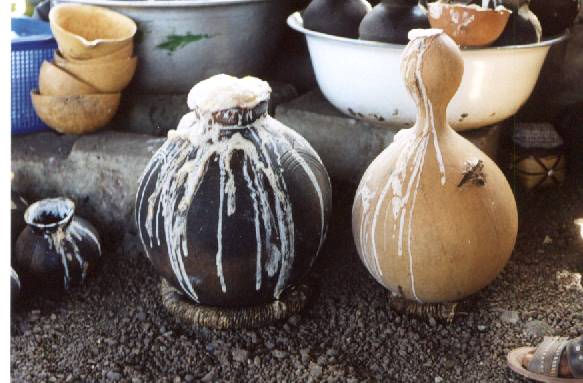

The clay pot and gourde above contain pito, called 'daa', pictured here in Lawra's weekly market. The drink is fermented a couple of days before from Guinea corn. The Guinea corn is first washed then then boiled in large aluminium couldrons heated by burning tree branches for an entire day. The mixture is then sieved through locally made straw baskets to remove the liquid from the mash, the latter being given to pigs. The following morning, after the mixture has cooled, a quantity of yeast from a previous brew is added. Some people like to drink the sweet warm unfermented pito before the yeast is added, although you need to be friendly with a pito woman to get hold of the drink at this stage. The drink, ranging from 2 to 4% alcohol, is poured into gourdes and locally made clay pots of all sizes.
Pito is drunk outside at almost every occasion and at any time of the day. Women often carry their pito in aluminium basins early in the morning to markets and pito 'bars'. The white head seen on top of the cly pots is due to the fermentation process still being active during transportation and consumption! People buy a pot of pito, which is then shared between all of the people sitting at the same bench and is drunk from calabashes.
Pito brewing and selling is exclusively done by women and forms a valuable source of independent income. Pito brewed in different areas has different characteristics. For example, pito from Nandom, a town about 30 km north of Lawra, tends to be stronger and fairly sour compared to sweeter Lawra pito.